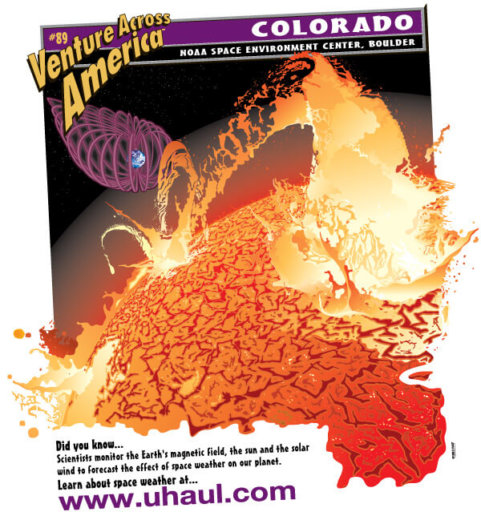Heatwave predicted for sun
Space weather? What is space weather? Upon entering the US Department of Commerce compound a combat uniformed gentleman flags me to stop. He instructs me to open the drivers’ door and to drop my tailgate. Upon complying, his German Sheppard runs up and over and through my truck. I’ll have some explaining to do to Murphy. I proceed into the nearby visitors center as the explosives dog continues his search.
Today’s tour of the National Oceanic and Atmospheric Administration – NOAA books months in advance. I beg my way in only a week earlier. As a last-minute registrant, they have no official record of me on this tour. These gatekeepers ask that I stand aside as they confirm my being here.
I step back from the counter thinking I’m leaning against a ceiling support post, I inadvertently set off the metal detector stationed there. Geez, this is a shaky start to a visit.

After passing the initial screening, I’m directed into the Skaggs research center. Once there am met with yet another armed guard. This guy gives an unsettling repeated looking up and my body. I don’t know what I’m about to see but it must be akin to Fort Knox. Tersely, the guard directs me to either the bathroom or the gift shop. I assume the lobby sofa is also an acceptable option and chose that.
Here we go…
I settle in the waiting area and wait for the tour to begin. I pick up the recent NOAA newsletter and learn that hair and skin products create more pollutants than cars do in Boulder. I’m an immediate skeptic. Further, despite the Montreal Protocol, emissions are on the rise and more regulation is needed. Uh oh. Here we go. The sky is falling climate change alarmist, I surmise.
A pleasant lady meets a group of 12 of us in the lobby and gives the general lay of the land. She explains that 1000 atmospheric researchers work in this building, wow!
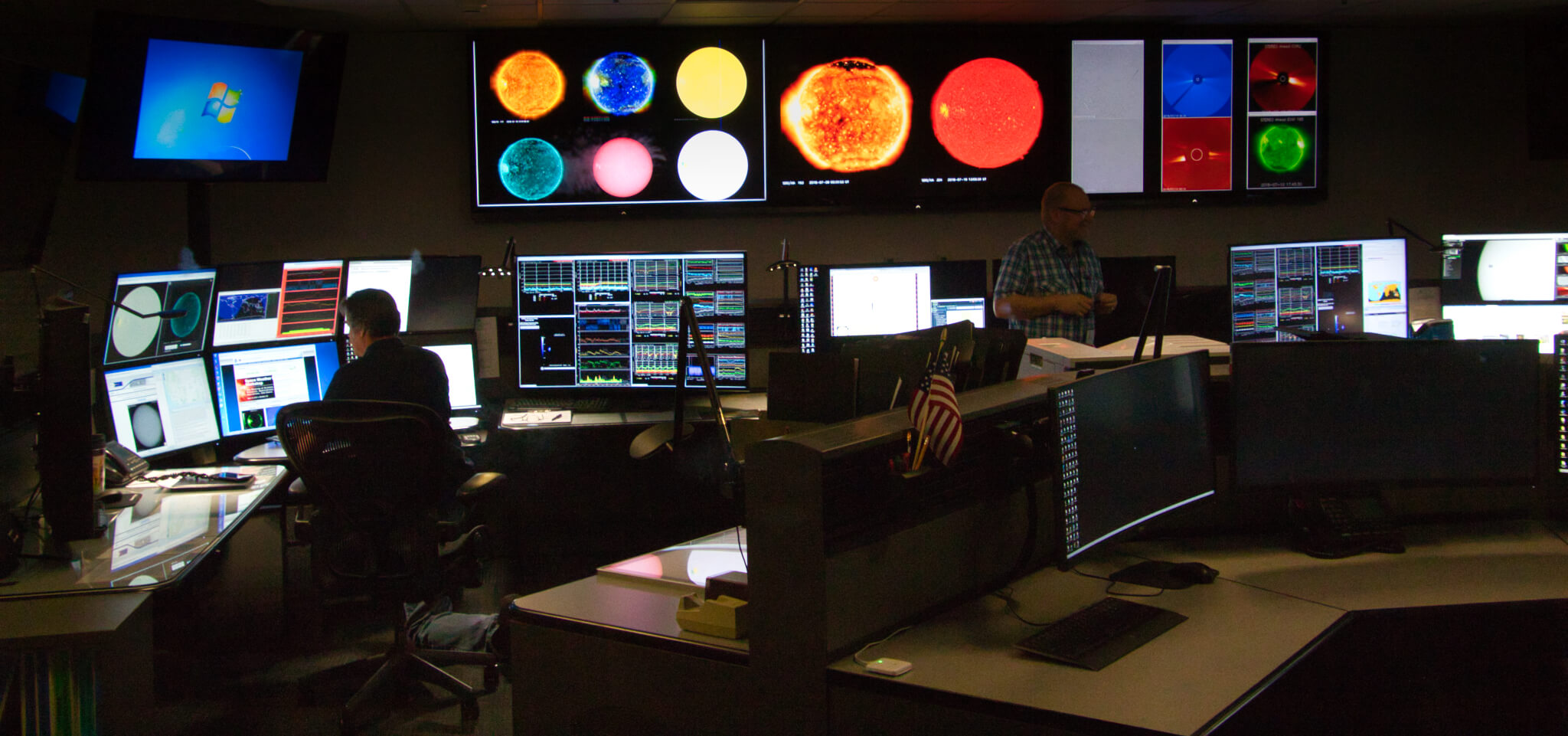
We proceed into a larger room with the Space Weather Prediction Center on the other side of a glass wall. Here we learn all manner of operations of the team we are gawking at. I sense the pressure we’re putting on them to look busy. The last major geomagnetic storm was in 1989. On average, only 4 such storms occur every 11 years. I give those guys credit for patience and perseverance.
All weather on Earth, from the surface of the planet out into space, begins with the Sun. Space weather and terrestrial weather (the weather we feel at the surface) are influenced by the small changes the Sun undergoes during its 11-year solar cycle. Thus this center is where researchers watch the sun day and night (how do they do that when it’s dark). The researchers are looking for signs of solar flares, coronal mass ejections, plasma wind. These disruptions allow them to predict radio blackout storms, solar radiation storms, and geomagnetic storms.
While a bit esoteric, the science behind it all is fascinating and our guide explains it well.
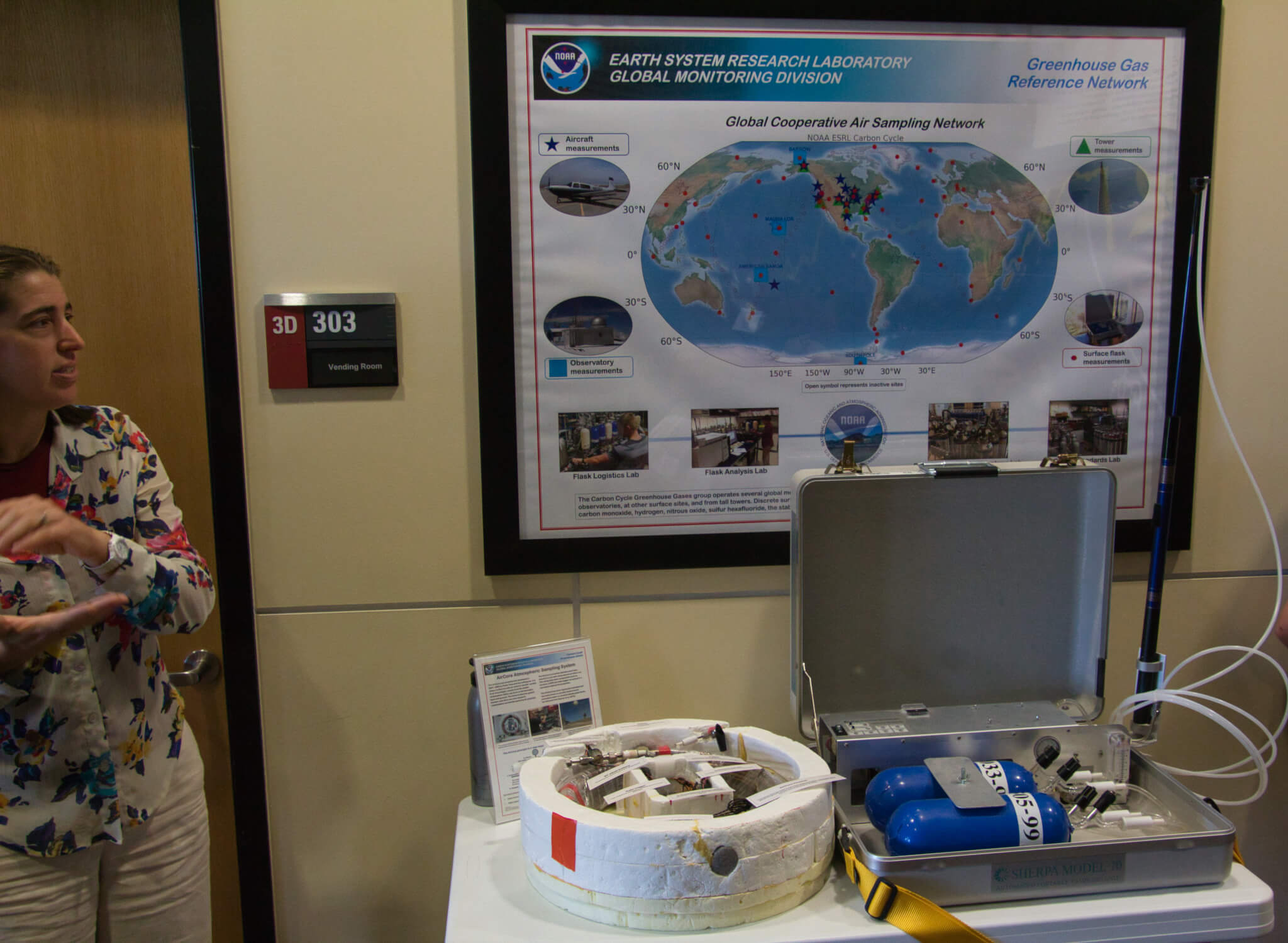
The tour proceeds through the local office of the National Weather Service and state avalanche forecast center before visiting the Science on a Sphere theater
Science on a Sphere
I have seen another Science on a Sphere at the National Weather Service in Norman, OK. However, this 6 foot 3D globe is in a darkened theater this allows it to just come to life.

Our guide projects numerous scenarios as we watch representations of clouds, currents, winds, tsunamis, and even hurricanes track across the globe.
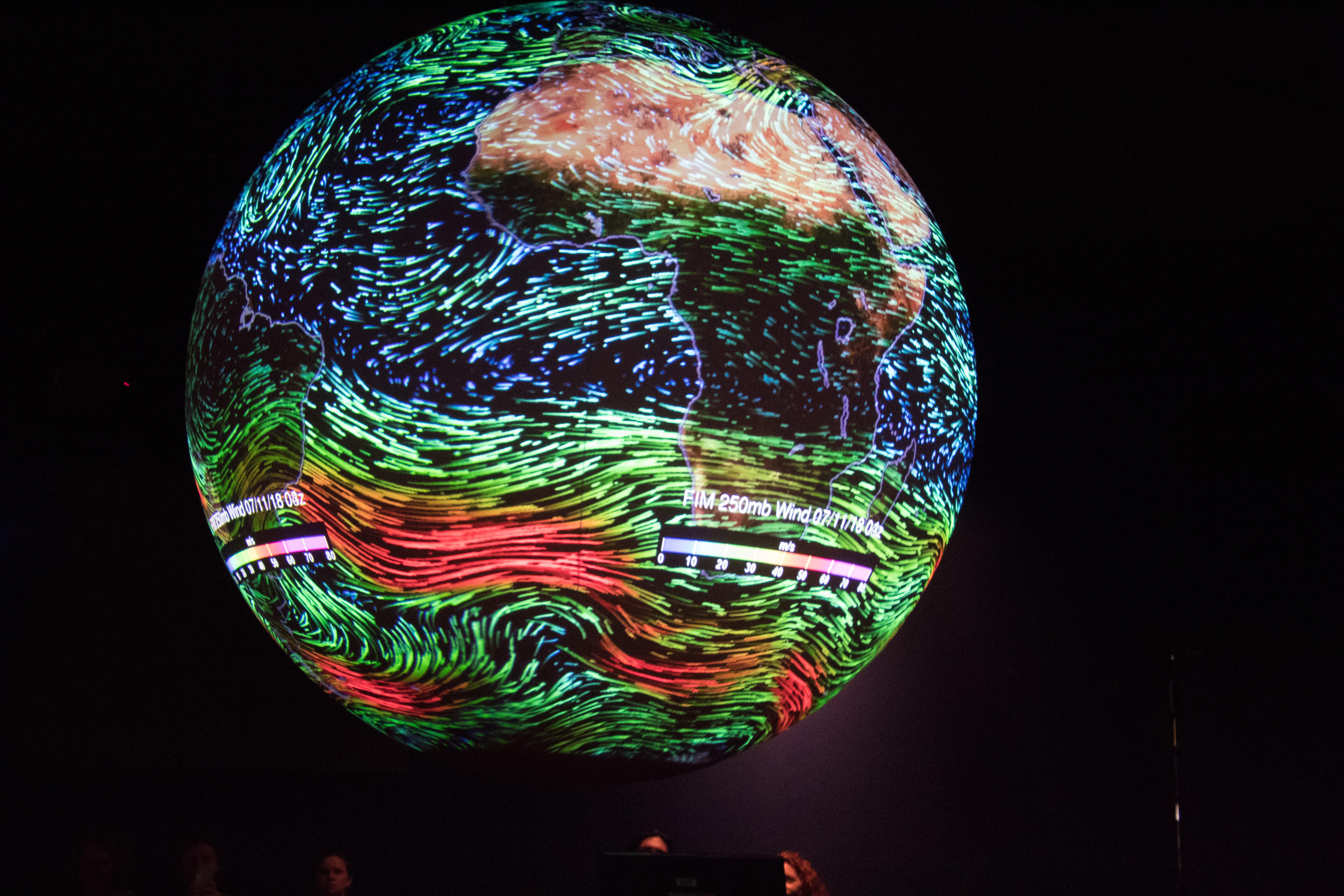
I particularly like the data display showing the water temps that tagged sea turtles are resting in. It’s a pretty amazing use of science.
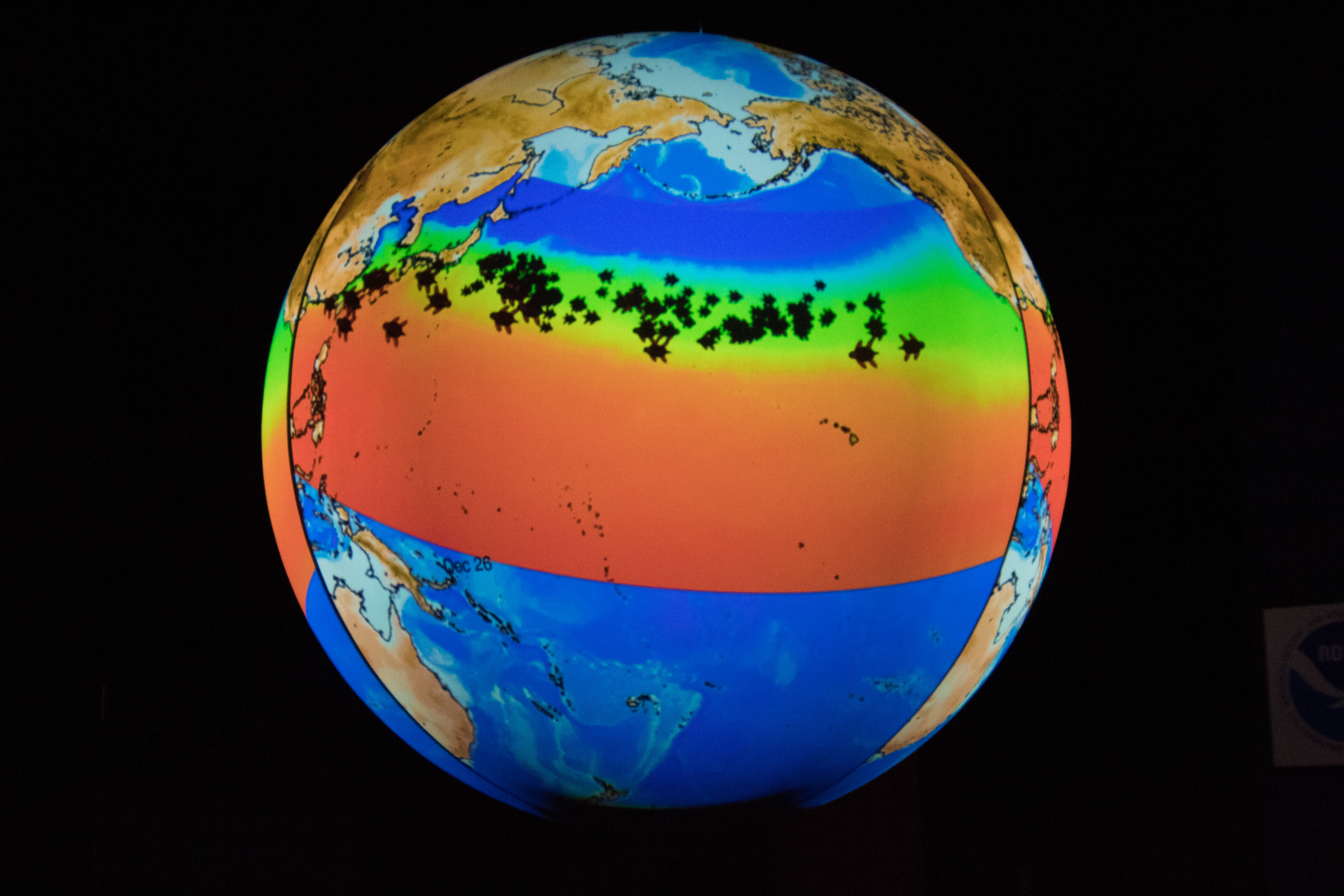
These popular tours last about 1.5 hours and over some fantastic sights into what I would normally take for granted.
My initial concerns about this being a sky is falling indoctrination are unfounded. Though we did skirt around the edges of man’s carbon production. It is emphasized that data collection in this area is for forming a baseline for future study only. In that case, I’m slapping on the lotion and fixing my hair.

